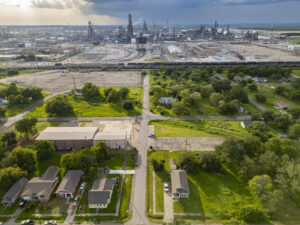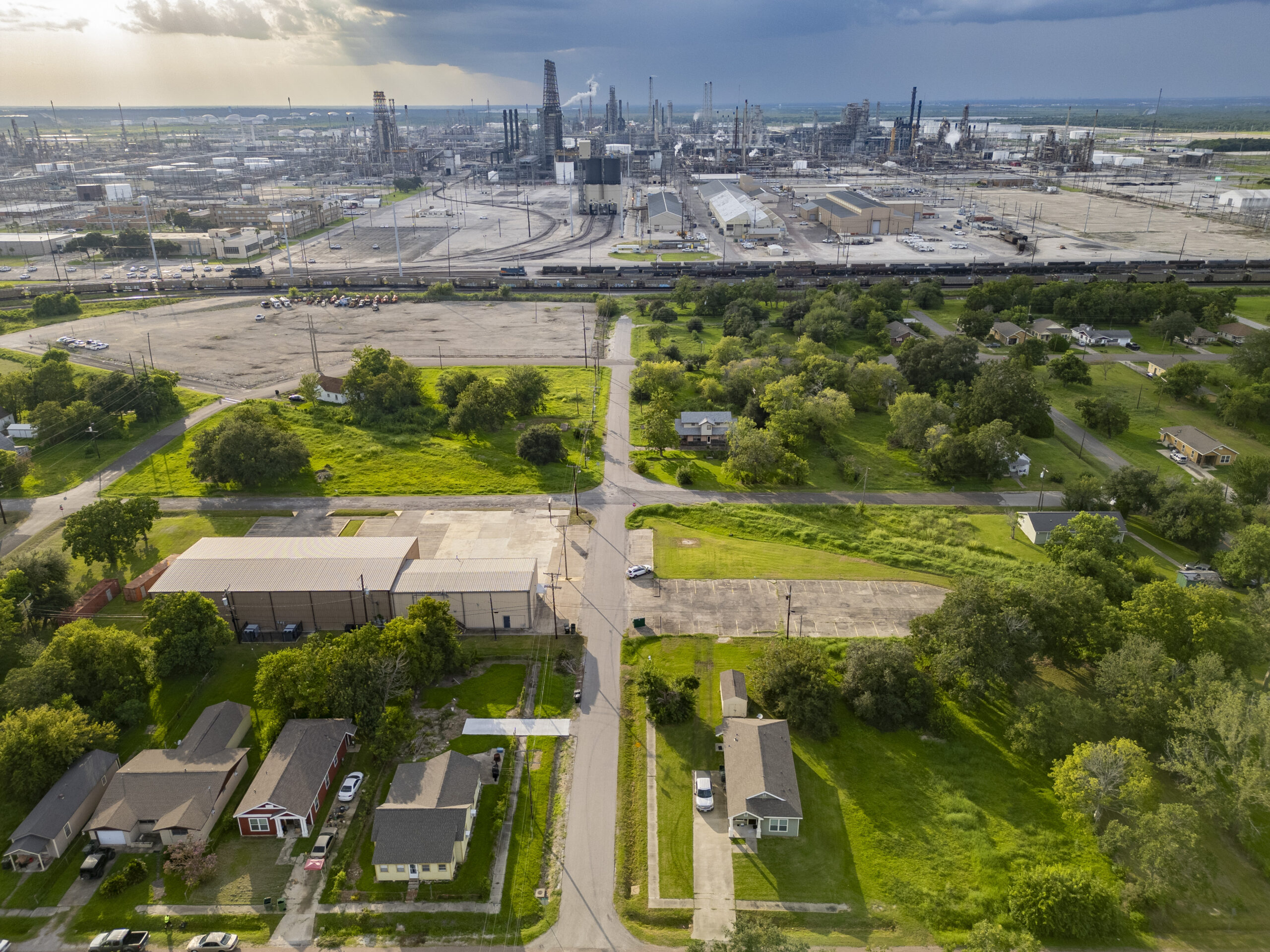
What’s new?
A new study authored by researchers at Cornell University, the Environmental Defense Fund, and the University of Oklahoma paired a sophisticated model with measurements of benzene near refineries to show how actual emissions during unplanned releases are likely substantially higher than industry-reported amounts.
Why it matters
Petroleum refineries release large amounts of benzene, a known human carcinogen that can be harmful to human health even at low concentrations. Communities living close to these refinery facilities (also known as fenceline communities) are exposed to health-harming levels of benzene for which there is no recommended safe level according to the World Health Organization. Benzene exposure is a global environmental justice threat.
Refineries emit benzene as part of routine operations and during unplanned emissions events called “upsets” spurred by equipment malfunction, power outages, or adverse weather. During a typical upset, a large quantity of pollution is released over a relatively short period of time, resulting in higher-than-normal concentrations of toxic chemicals around the facility. Although not considered part of normal operations, upsets occur regularly, with over 10 upsets occurring on average each day from 2004 to 2022 in the state of Texas. Yet upset emissions are largely preventable. In the U.S., upset emissions are often exempt by legal loopholes that allow facilities to release unlimited amounts of pollution during periods of start-up, shutdown, and malfunction, all without consequence.
Our Take
Our team developed a new modeling framework to verify industry’s self-reporting of benzene upset emissions. We compared modeled benzene levels based on reported upsets with measured levels of benzene near refineries in Texas. Our study found that overall, observed concentrations were an estimated 3 to 95 times higher than model predictions meaning that upset emissions and associated community exposures are underestimated by a similar magnitude.
The study also highlights the importance of using a model that can account for the impact of obstacles (for example: buildings, equipment and tanks) on the movement of air pollutants. The modeling framework presented could be applied to any facility to quantify discrepancies between reported emissions and those derived from fenceline monitoring data.
Next Steps
This research focused on fenceline benzene measurements at petroleum refineries because this is currently the only sector and chemical with comprehensive fenceline monitoring requirements in the U.S. Fenceline monitoring of additional pollutants at different types of facilities (e.g. petrochemical facilities) would allow for broader characterization of emissions underreporting and make the true level of toxic air pollution visible. The recently finalized HON rule represents a step in the right direction as it requires fenceline monitoring of 6 chemicals at chemical manufacturing facilities that use, emit, or store each of these chemicals.
To protect fenceline communities from exposure to high concentrations of toxic chemicals, additional safeguards are needed to prevent upset emissions from occurring in the first place. Removing exemptions from emissions standards during periods of startup, shutdown, and malfunction would be a great starting point for encouraging companies to put these safeguards in place.
To learn more, read the full publication in Atmospheric Environment: X.
Libby Mohr is a Senior Data Analyst working on EDF’s Petrochemicals Initiative.



